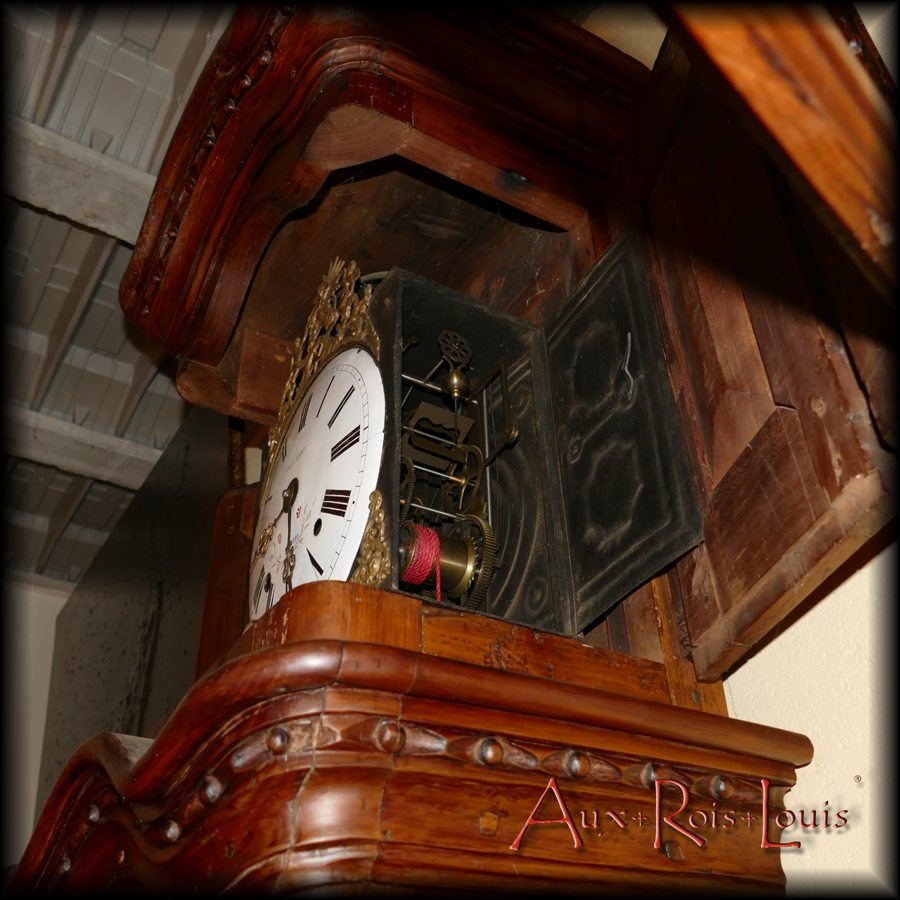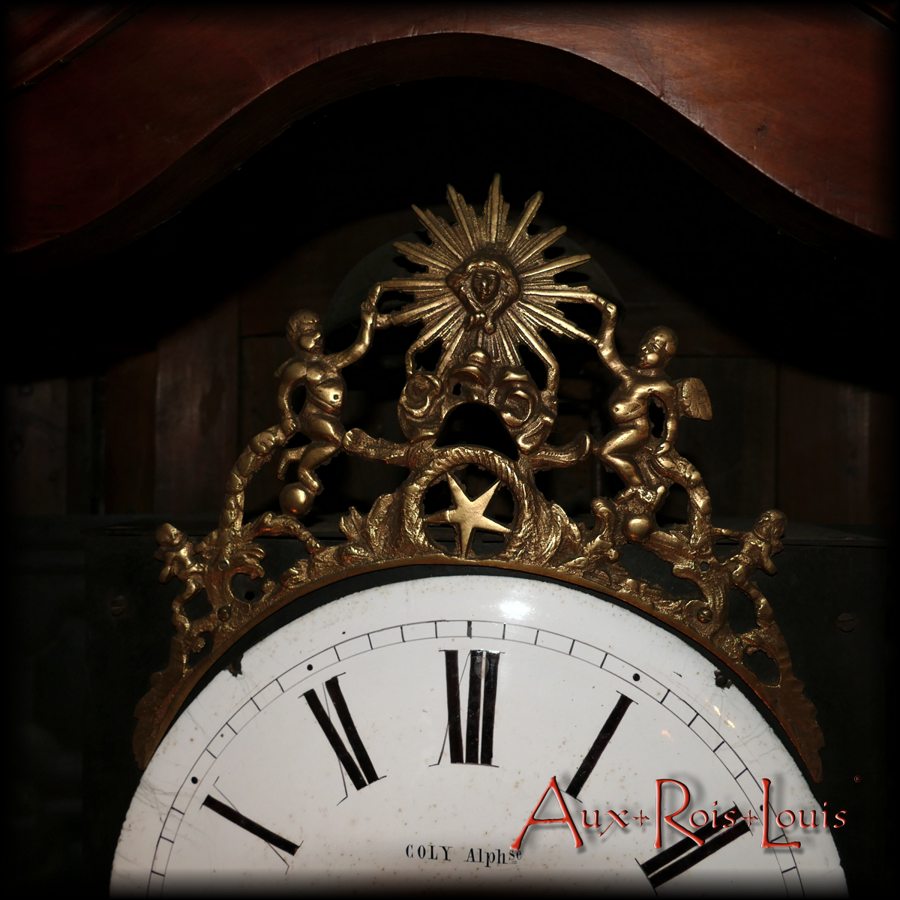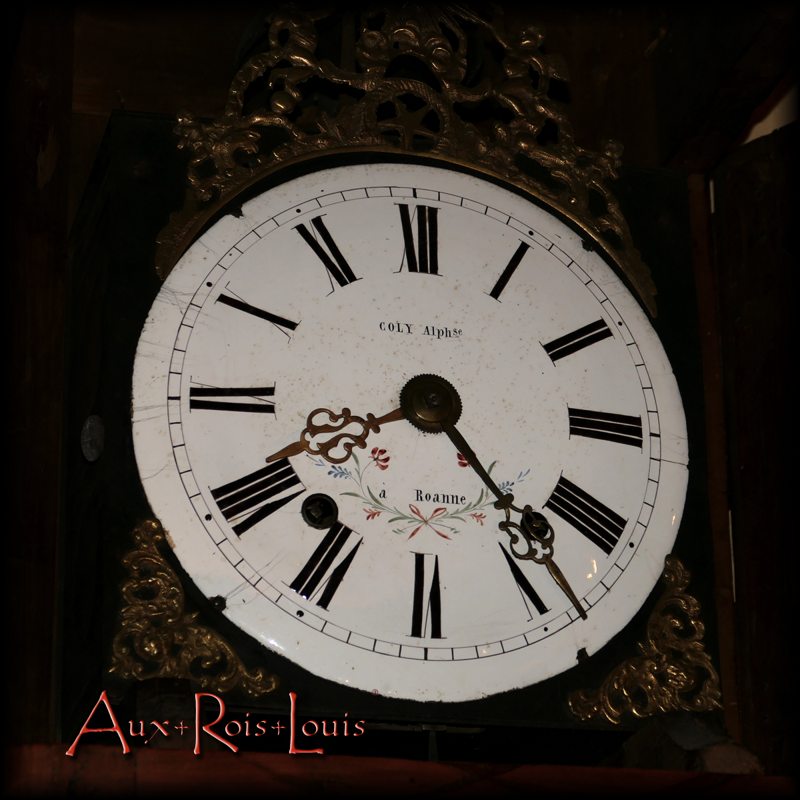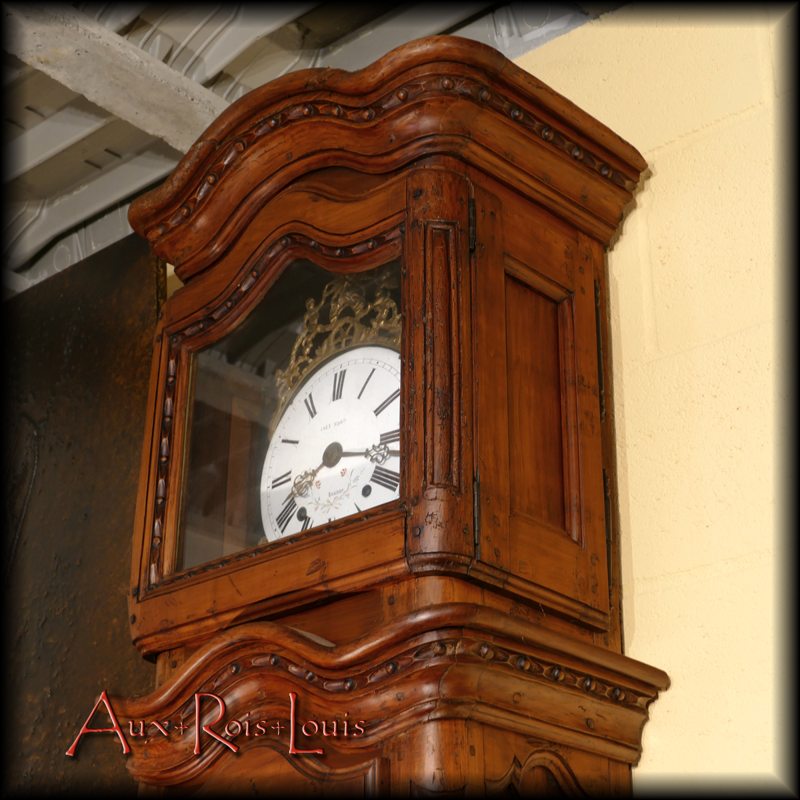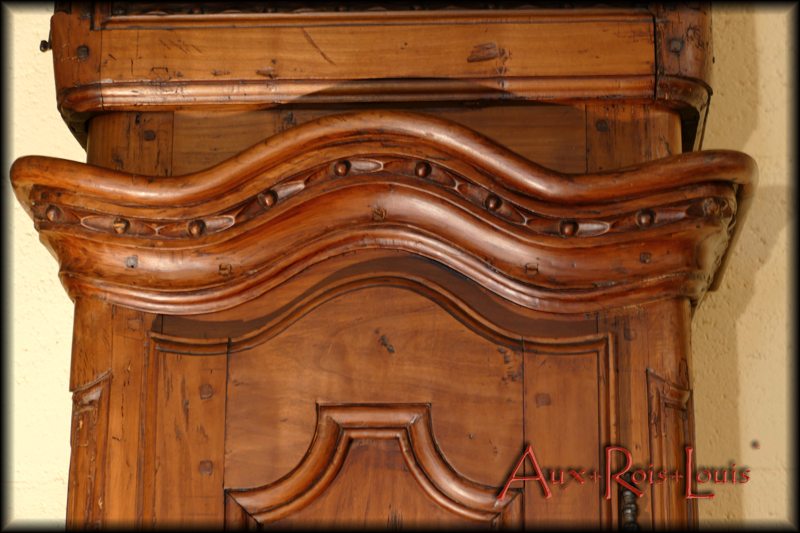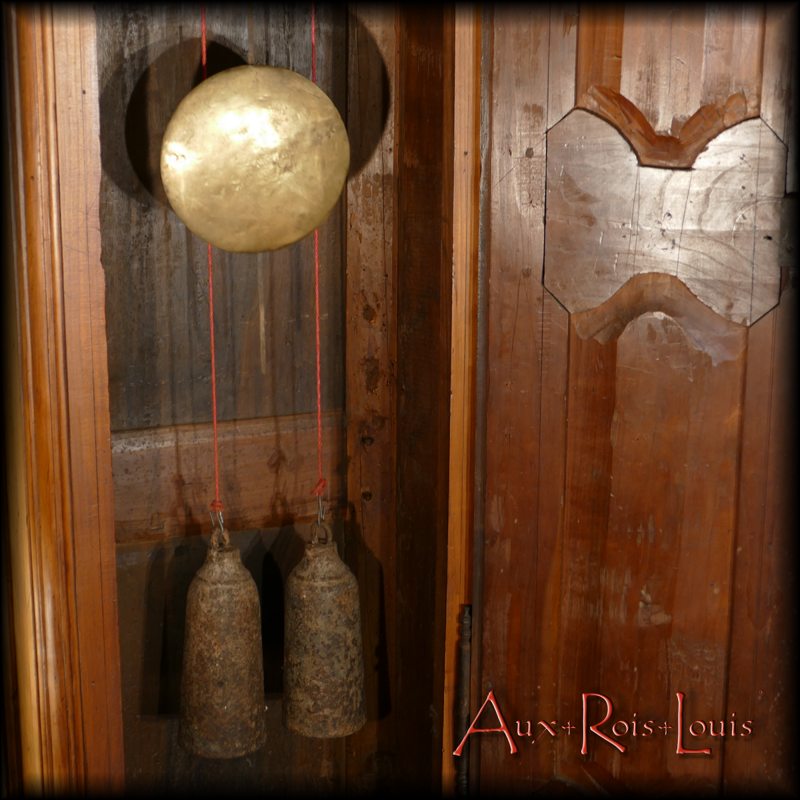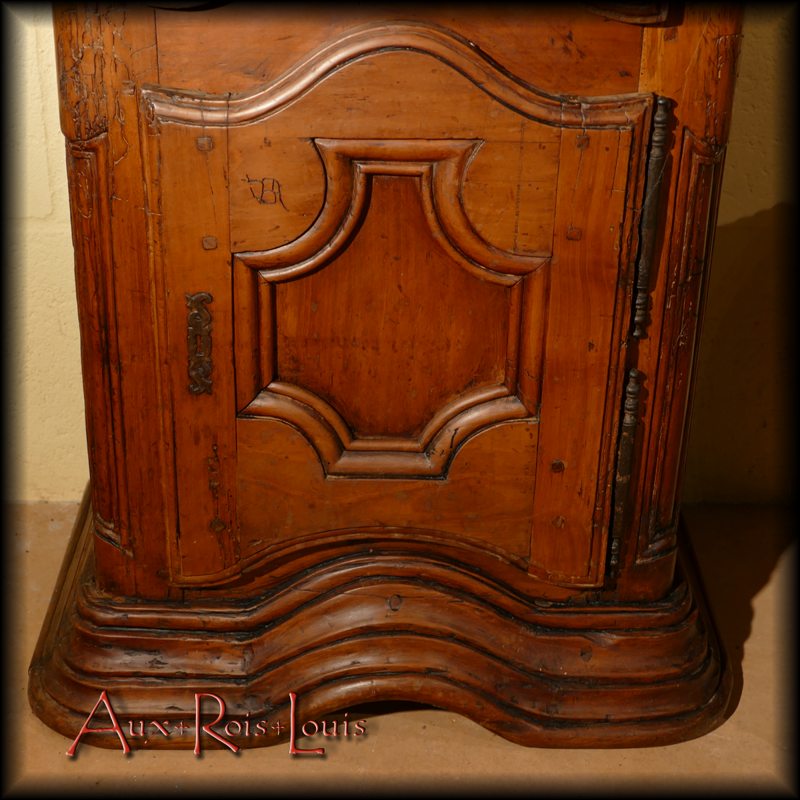The millennial quest for the measurement of time will free itself from the course of the Sun and the flow of water to switch, in the Middle Ages, into the world of precision.
Around 1292, the existence of one of the first mechanical clocks is attested by its mention in the famous novel “Le Roman de la Rose”. And if, previously, astronomical clocks punctuated in the heart of monasteries and on the towers of cathedrals the prayer times of the faithful, with the rise of public mechanical clocks, it is all social life that in each city or village will be timed. The powerful will rob the Clergy of the “keys” of time to better control their subjects.
Thirdly, from the 17ᵗʰ century, “à porter” clocks will be used in homes.
Mansion clock in cherry wood – 18ᵗʰ century – Périgord
It is in Morbier in the Jura that French watchmaking will be established, a stone’s throw from the Switzerland county expert in the field.
At the time, it was hawkers who transported and traded these precious clockwork mechanisms, while the cases were made on site by craftsmen responsible for elegantly dressing these gems.
As with all furniture, the famous “menuisiers en meubles”, as they were then called, competed in creativity to bring their personal touch in the interpretation of styles emanating from the Court. Each of these clocks thus deserves to be carefully examined to reveal its character.
Designed at the end of the 18th century, this large slender clock stands on a cherry wood case created by a menuisier en meubles from Périgord. It has retained on its original dial two precious indications: COLY Alphse – à Roanne, that is to say the name of the watchmaker Alphonse Coly and the location of his workshop, Roanne in the Loire.
To more precisely describe its charm and its style, we notice at first glance the scalloped curves of the cornice and the picture rail which highlight the enamelled sheet dial.
Closer up, we can see, on the front and to the sides, delicate friezes carved with beaded patterns.
The two doors are decorated with molded panels marrying rounded geometric shapes.
So many refinements that evoke its manufacture at the end of the 18ᵗʰ century, still under the influence of the Louis XV style.
However, other more discreet clues lead us to think that it is in its own way “revolutionary”. On the part cast in bronze called the “coronation”, we recognize a sun carried by two cherubs and, just below, three small stylized Phrygian caps, emblems of the French Revolution.
Perhaps it is these symbols that spared him the tragic end of many previous works, destroyed because of their style entirely dedicated to previous monarchies.
Price: on demand.
Dimensions
Width: 50 cm, height: 254 cm, depth: 35 cm.
Reference: [ME057]

![ME057_P1600918_800 Mansion clock in cherry wood – 18ᵗʰ century – Périgord – [ME057]](https://www.aux-rois-louis.com/wp-content/uploads/2021/07/ME057_P1600918_800.jpg)
